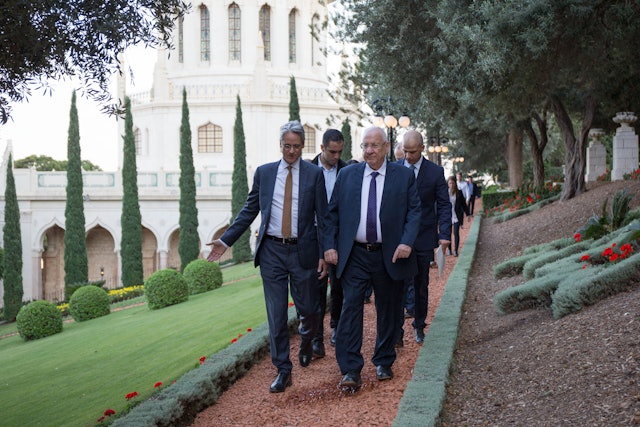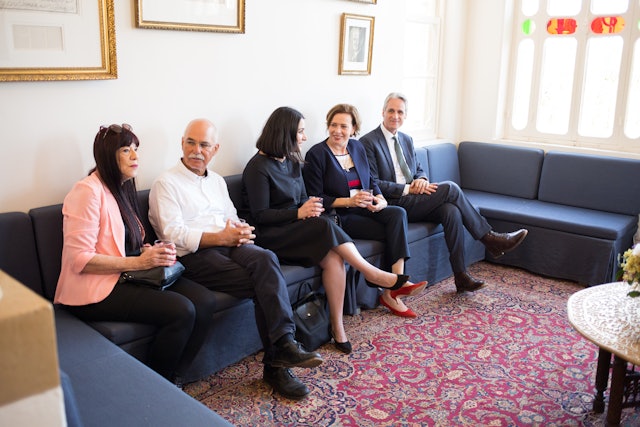CBS This Morning
Behind the Bahá’í faith, one of the fastest growing religions
In our World of Worship series, we’re exploring different ways people practice faith and religion around the globe. In this installment, we’re looking at one of the fastest growing religions in the world, the Bahá’í faith. There are now more than 100,000 Bahá’í communities worldwide. Dana Jacobson takes you on a journey to the “Mother Temple of the West.”
The Shrine of the Bab – Aerial Footage with Music
President of Israel visits World Center to honor bicentenary amid wave of commemorations in Haifa and across the globe
October 28, 2019
BAHA’I WORLD CENTRE — On Sunday, President of Israel Reuven Rivlin came to Haifa to honor the 200th anniversary of the birth of the Bab.
The visit follows a recent reception for local leaders and a special two-evening opening of the Shrine of the Bab and the terraces on Mt. Carmel, which saw more than 16,000 visitors walk through the Baha’i gardens, with many entering the Shrine, in a stirring display of joy, reverence, and social harmony. A brief film about the Bab was shown at the bicentenary reception.
“The values of tolerance and respect are well integrated into the two cities where the Baha’i World Centre is based—Akka and Haifa,” remarked President Rivlin during his visit. “The State of Israel is proud and delighted to host Baha’i believers and the World Centre for the Baha’i Faith, which promotes values of peace and unity among different religions.”
During his visit, President Rivlin joined Dr. David Rutstein, the Secretary-General of the Baha’i International Community, on a visit to the Shrine of the Bab and a walk through the surrounding gardens.
With sunset this evening, the Twin Baha’i Holy Days have commenced at the Baha’i World Centre, and commemorations will be held on 29 and 30 October to celebrate the bicentenary of the birth of the Bab and the 202nd anniversary of the birth of Baha’u’llah at Their sacred Shrines.
The history of the Baha’i Faith is deeply connected with the Holy Land and goes back more than 150 years. After the martyrdom of the Bab in the Persian city of Tabriz in 1850, Baha’u’llah and His family and closest companions underwent a series of exiles. Baha’u’llah’s last banishment was to Akka in 1868, where He lived the remaining years of His life. August 31 last year marked the 150th anniversary of His arrival to the Holy Land, which was explored in parts 1, 2, and 3 of a podcast series published by the Baha’i World News Service.
After the martyrdom of the Bab, His remains were recovered and concealed by the Baha’is until a final resting place was established on Mt. Carmel in Haifa, where today a magnificent Shrine illuminates the mountainside, surrounded by terraces and gardens.
This week, celebrations are being held in virtually every country as people mark the bicentenary of the birth of the Bab and the 202nd anniversary of the birth of Baha’u’llah on 29 and 30 October, respectively. Stories, videos and photographs from celebrations around the world are available on the bicentenary website.



